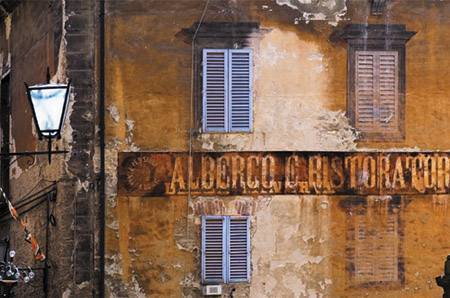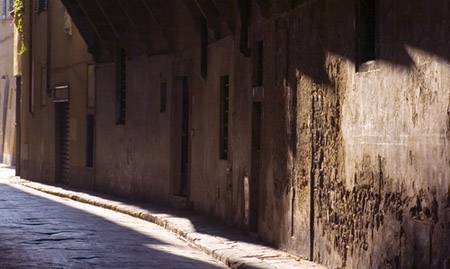Five Habits to Optimize Image Quality
| The first step in consistently capturing good images is to develop sound habits that you apply instinctively, each time you take pictures. We're not talking about understanding exposure, composition, or any other specific techniques just yet; the list that follows is more fundamental than that. Follow these suggestions and internalize them as habits. They can make the difference between a good shot and a great one.
Clean EquipmentMake sure that your lenses, filters, and eyepieces are clean and free from dust, smudges, or fingerprints. It sounds obvious, but because many digital cameras are smaller and easier to carry, they also become easier to smudge, scuff, and knock around. Keeping equipment clean is less of an issue with large and medium format cameras, in that their size (and cost) makes us approach them more methodically. Reach into your camera bag (or your pocket) to grab your camera, and you can easily fingerprint your lens or accidentally change the settings.
The casual, portable nature of digital cameras turns their lenses into dust magnets. Dust on a lens translates into dust on the digital image, and cleaning up your dust spots in Photoshop is tedious and time consuming. Because of the immediate nature of digital technology, you're going to shoot a lot of images; retouching all those images is time consuming. In the long run, a dirty lens eats into your productivity. Be especially careful with your lens because dust and fingerprints on the glass translate into soft spots and blurred image areas. Always carry a small bellows or lens tissue to keep the lens free of dust. In addition, make sure that you keep the eyepiece and LCD image display area clean. Many manufacturers seem intent on placing the image display area so that your finger or your nose leaves a smudge every time you have the slightest interaction with the camera. This obviously makes it harder to view the image you've just captured, and puts the onus on you to clean it more often. If you don't clean your camera regularly, all this dust and oil accumulates over time, making it even harder to clean, while impacting performance and reliability. Tripod and Cable ReleaseCamera shake is perhaps the number one enemy of sharp pictures. You can have the highest quality lens and the perfect lighting conditions, but if your camera is moving as you take the shot, your images will be disappointing. Camera shake happens for two reasons: The most obvious is when you're shooting at a slow shutter speed and you move the camera slightly while the shutter is open. The second instance is movement created as you trigger the shutter. This can happen at much faster shutter speeds and tends to be slightly less noticeable, although it still impacts overall quality.
The solution is to use a tripod whenever possible; if your camera accepts a cable release, you should buy one and use it to trigger the shutter. I know it sounds like a pain to carry a tripod around, but there are ways of coping with it (see the PhotoTip on tripod options on the previous page). The cable release is easier than the tripod to carry and works wonders when combined with the tripod. An added benefit of using a tripod and cable release is that it slows you down and makes the process of capturing the image more methodical. As a result, you will find that you're a bit more thoughtful regarding composition and framing, and just a bit more discerning in general when you approach a potential image ("…is this shot really worth setting up my tripod for?").
Focus ControlAlthough autofocus capabilities have matured in recent years, the systems can still lock in on the wrong area or be fooled by an absence of sharp edges. If your camera allows it, consider changing to Manual Focus mode and focusing by hand. This is sometimes the most direct way to ensure a clean, sharp image, especially if you're shooting close-up images or are using a narrow depth of field (see Chapter 3, "Focus and Depth of Field," for more on depth of field). Exposure OptionsDevelop an understanding of how your light meter works and plan your shot accordingly. Consider shifting to spot or center-weighted metering to optimize exposure or explore exposure alternatives. Also consider exploring various f-stop and shutter speed combinations to optimize sharpness and depth of field. For more on exposure, see Chapter 2, "Digital Exposure." On the other hand, if you have only one shot at the image; bracket, bracket, bracket. Manual focus, cable releases, and tripods are great when the subject isn't going anywhere. When you have to react fast, set the camera to bracket all exposures. Remember that you can also go into the digital camera's setup menu and specify the degree of exposure variation from shot to shot, allowing you to fine-tune the process to the lighting conditions. See the section, "Bracket in Uncertain Light," later in this chapter, for details on bracketing.
Use a LaptopIf you're doing an important shoot that will be very hard to replicate, hook the camera up to a laptop and review your images on a big screen in real time. I carried my PowerBook with me on several shoots in Italy and was thankful that I could zoom in to check exposure and image sharpness in real time. This allowed me to see the full image and fine-tune the results as I was shooting. The result: no surprises. I knew what I was getting while the camera was still set up. If an image wasn't right, I recomposed, waited for the wind to die down, or made some other revision in order to get it right.
|
EAN: 2147483647
Pages: 141
- Chapter I e-Search: A Conceptual Framework of Online Consumer Behavior
- Chapter III Two Models of Online Patronage: Why Do Consumers Shop on the Internet?
- Chapter VI Web Site Quality and Usability in E-Commerce
- Chapter IX Extrinsic Plus Intrinsic Human Factors Influencing the Web Usage
- Chapter XVII Internet Markets and E-Loyalty











